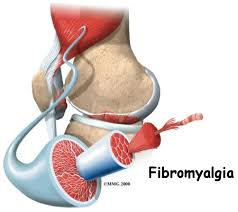After examining and treating a client who has been raped, discharge instructions from the emergency department (ED) would include which of the following?
Information about available community resources.
When to return to the ED for follow-up care.
Names and phone numbers of local attorneys who defend rape victims.
The phone number of the battered women's shelter or safe house.
The Correct Answer is A
Choice A reason:
Providing information about available community resources is crucial for ongoing support and assistance. These resources can offer counseling, medical follow-up, legal advice, and other services that may be needed after such a traumatic event. Community resources play a vital role in the recovery process, offering a network of support and specialized services tailored to the needs of sexual assault survivors.
Choice B reason:
While it is important to know when to return to the ED for follow-up care, this is typically not the primary content of discharge instructions. Follow-up care is usually managed by primary care providers or specialists rather than the ED unless there are specific complications or concerns that need to be addressed immediately.
Choice C reason:
The names and phone numbers of local attorneys may be provided, but this is not standard for all discharge instructions. Legal support is important, but the immediate focus post-discharge is often on the survivor's physical and emotional well-being. Attorneys specializing in defending rape victims can be a part of the community resources provided to the survivor.
Choice D reason:
The phone number of a battered women's shelter or safe house may be included in discharge instructions, especially if there is an immediate need for safe accommodation. However, this is not the only resource that should be provided, and it is not specific to all cases of sexual assault.
Nursing Test Bank
Naxlex Comprehensive Predictor Exams
Related Questions
Correct Answer is B
Explanation
Choice a reason:
Diuretic use is not typically associated with an increased risk of developing fibromyalgia. Diuretics are commonly used to treat conditions like hypertension and edema by helping the body eliminate excess fluid, but they do not contribute to the onset of fibromyalgia¹.
Choice b reason:
Emotional or physical trauma has been identified as a risk factor for fibromyalgia. Individuals who experience significant stress or traumatic events may develop the disorder due to changes in how their central nervous system processes pain. Stress can lead to long-lasting effects on the body and may trigger fibromyalgia or worsen its symptoms²³⁴.
Choice c reason:
Being overweight is not a direct risk factor for fibromyalgia, but it can exacerbate symptoms in those who have the condition. Excess weight can increase the strain on the body and may contribute to the chronic pain and fatigue associated with fibromyalgia. However, it is not considered a causative factor¹.
Choice d reason:
Being an adolescent male is not a recognized risk factor for fibromyalgia. The disorder is more commonly diagnosed in women, and while it can occur at any age, it is most often diagnosed during middle age. Gender and age alone are not sufficient to determine the risk of developing fibromyalgia.

Correct Answer is A
Explanation
Choice A reason:
Prednisone is a corticosteroid that can cause hyperglycemia, especially in clients with diabetes. The nurse should monitor blood glucose levels because prednisone can increase insulin resistance and hepatic glucose production, leading to elevated blood glucose levels. Normal fasting blood glucose levels range from 70 to 99 mg/dL, and for individuals with diabetes, maintaining blood glucose levels within the target range set by their healthcare provider is crucial to prevent complications.
Choice B reason:
While corticosteroids can affect electrolyte balance, they typically cause a decrease in potassium levels, not an increase. Therefore, monitoring for hypokalemia, rather than hyperkalemia, would be more appropriate when a patient is on prednisone. The normal range for serum potassium is 3.5 to 5.0 mEq/L.
Choice C reason:
Corticosteroids like prednisone can cause leukocytosis, an increase in white blood cell count, as part of their immunosuppressive action. However, this is generally not a harmful side effect unless accompanied by infection or other complications. The normal range for white blood cell count is approximately 4,500 to 11,000 cells per microliter.
Choice D reason:
Increased ketones in the urine, or ketonuria, is not a typical side effect of prednisone. Ketonuria is more commonly associated with uncontrolled diabetes, particularly Type 1 diabetes, when there is an insulin deficiency and the body resorts to fat breakdown, leading to ketone production.
Whether you are a student looking to ace your exams or a practicing nurse seeking to enhance your expertise , our nursing education contents will empower you with the confidence and competence to make a difference in the lives of patients and become a respected leader in the healthcare field.
Visit Naxlex, invest in your future and unlock endless possibilities with our unparalleled nursing education contents today
Report Wrong Answer on the Current Question
Do you disagree with the answer? If yes, what is your expected answer? Explain.
Kindly be descriptive with the issue you are facing.
